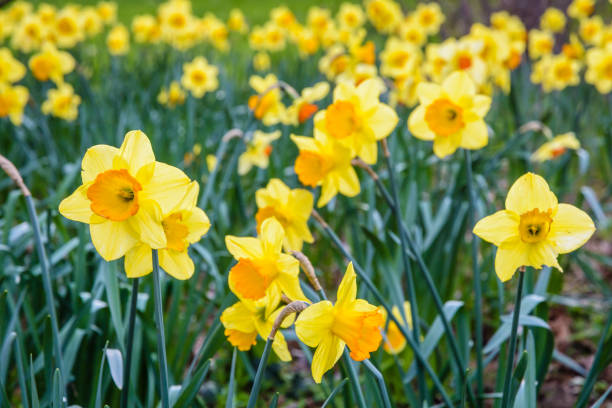Narcissus Jonquilla is generally famous as jonquil. It is considered a perennial bulbous flowering plant. Significantly, it is first time discovered in 1750. Jonquil is one of those plant species that grows in late growing seasons such as at the end of April till May. The average height of this plant is 12’’ tall. And at each stem, you will see 4-5 flowers that have a pleasant fragrance. The flowers grow in the shape of a corona cup along with perianth petal segments. Rush daffodils have an attractive yellowish golden colour. In the form of upright clumps, its leaves grow in dark green. Overall it is a highly attractive flowering plant.
Origin:Rush daffodils are fitted time originated in Central Spain, South And East Portugal.
Naturalized:Later on, this flowering species is also widely grown in Canada and various regions of Europe.
Scientific Name: Narcissus jonquilla is the scientific name of this plant.
Common Names: Jonquil, Wild Jonquil, Rush Daffodil are the other beautiful names for Narcissus jonquilla.
Family: It belongs to the Amaryllidaceae family.
Subfamily: Amaryllidoideae is the subcategory of this flower.
Genus: Narcissus
Species: N. jonquilla
Hardiness zone:
Growing Time: The best time to grow this plant in April to May.
its hardiness zone range from 4-8.
Maintenance: Jonquilla doesn’t need any extra care and maintenance.
Tolerate: It can resist rabbits and deer.
Light:The development of this plant species needs to provide it with complete sunlight. Simply, it should get a minimum of 5-6 hours of sunlight.
Temperature: Interestingly, these flowers can tolerate cold weather. Due to which they have widely grown T the borders of the U.S and Canada. This flowering plant is accustomed to cold weather.
Watering: It is very important to water your plant on regular basis. When it is the first time that the bulbs of narcissus are planted facilitate it with deep watering. To make sure that the soil of this plant is not soggy but moist.
Soil: Well, drained soil is the key to the healthy growth of Rush daffodils. If there is a large amount of water in the soil, it becomes soggy and this plant will surely die. So prepare your soil in such a way that it will hold the moisture of the water and drain off the excess water. It prefers both sandy as well as clay soil. The ideal PH range for Narcissus jonquilla is 6-7.
Fertilizers:The perfect and recommended fertilizer for this plant is low-nitrogen fertilizer. For the development of beautiful blooms, two things are needed potassium and phosphorus.
Pruning: Significantly, there is no need for major pruning to these flowers. You can prune it before it’s growing season. You can remove the flowers that are dead but should leave it’s stem behind.
Pest And Diseases:
Pests: There is a various pest that feeds on Rush daffodils. Such as
- Peach aphids
- Foxglove
- Aphids
- Mites
- Files
All these pest feeds on daffodils, and while doing so they never kill your plant but damage it by spreading various diseases. Mites and flies attack the leaves of this flowering plant. And they also spread fungal diseases. So it is very important to check your plants on regular basis to prevent them from bacterial diseases.
Treatment: To cure narcissus jonquilla user insecticidal soap that will help you to cure your plants.
Uses: There are various uses of Narcissus jonquilla such as it is best to make rock gardens, beds, foundations, borders, landscape and woodland beautiful and elegant.
Conclusion: In a nutshell, Narcissus jonquilla is a perennial bulbous flowering plant. It is very simple to grow in your surroundings. And this plant usually prefers cold temperatures. Due to the pleasant fragrance of these rush daffodils, you can make your garden scented and peacefully.
Alternative:
Spirit Coneflower

